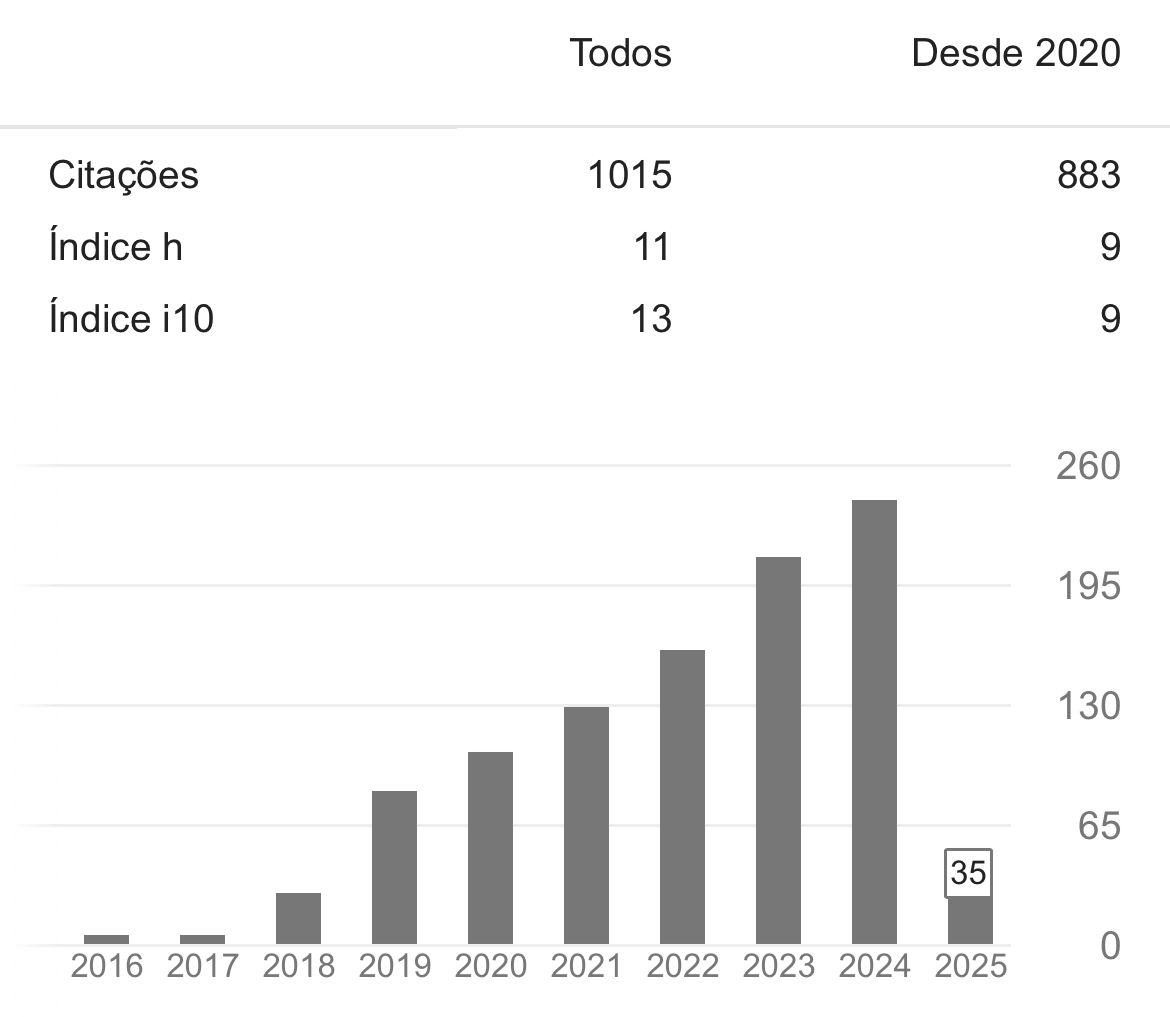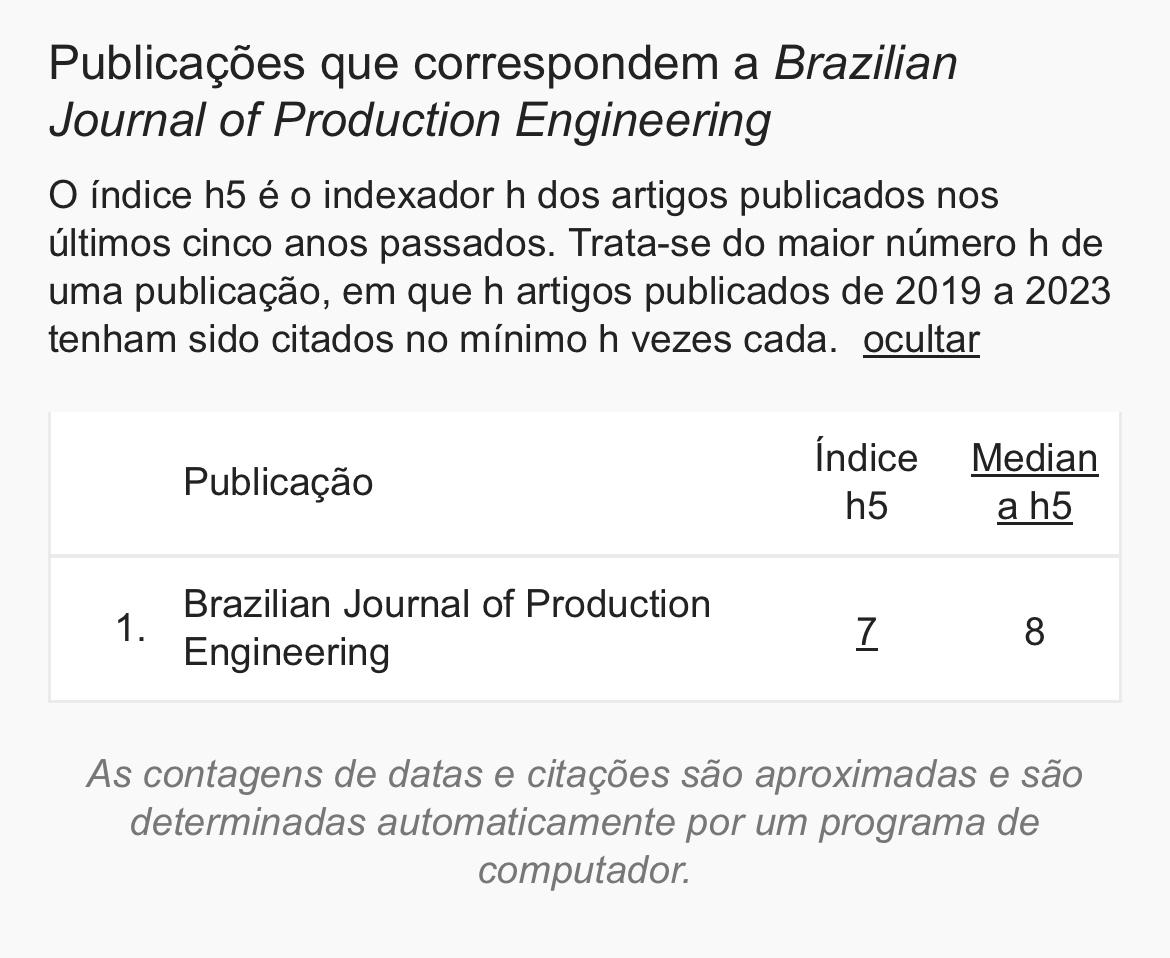Avaliação do ciclo de vida de concretos geopoliméricos: estudo comparativo
DOI:
https://doi.org/10.47456/bjpe.v10i3.44924Palavras-chave:
Avaliação do ciclo de vida, concretos geopoliméricos, sustentabilidadeResumo
A indústria da construção civil é responsável por uma parcela considerável da emissão de dióxido de carbono na atmosfera. A produção do concreto, que é o segundo material mais utilizado no mundo, é responsável pela maior parte das emissões de gases de efeito estufa das construções. Levando isso em consideração, essa pesquisa tem como objetivo apresentar soluções para a redução da pegada de carbono da indústria da construção civil. Para que seja possível obter um diagnóstico quantificando os impactos ambientais, é necessário que se utilize a Avaliação de Ciclo de Vida (ACV), que é uma metodologia holística que estuda os aspectos ambientais e os impactos potenciais, diretos e indiretos, ao longo da vida de um produto. A opção para redução de impactos avaliada foi a substituição do Concreto Convencional (CC) pelo Concreto Geopolimérico (CG), que é feito a partir da substituição total do ligante, cimento, por materiais pulverulentos ricos em sílica e alumina. Foram avaliados cinco cenários diferentes, uma cidade em cada região do Brasil. O resultado da ACV mostrou que os CG tem grande potencial de redução da pegada de carbono, gerando uma redução de até 60% no potencial de aquecimento global.
Downloads
Referências
Abbas, R., et al. (2020). Preparation of geopolymer concrete using Egyptian kaolin clay and the study of its environmental effects and economic cost. Clean Technologies and Environmental Policy, 22, 669-687. DOI: https://doi.org/10.1007/s10098-020-01811-4
Aequus Consultoria. 28º Anuário de finanças dos municípios capixabas. Vitória, 2022. Recuperado de http://aequus.com.br/anuarios/capixabas_2022.pdf
Alsalman, A., et al. (2021). Energy and CO2 emission assessments of alkali-activated concrete and Ordinary Portland Cement concrete: A comparative analysis of different grades of concrete. Cleaner Environmental Systems, 3, 100047. DOI: https://doi.org/10.1016/j.cesys.2021.100047
Associação Brasileira de Normas Técnicas (2009). NBR ISO 14040: Gestão ambiental-avaliação do ciclo de vida-princípio e estrutura. ABNT.
Associação Brasileira de Normas Técnicas (2009). NBR ISO 14044. Gestão ambiental-Avaliação do ciclo de vida-Requisitos e orientações. ABNT.
Bajpai, R., et al. (2020). Environmental impact assessment of fly ash and silica fume based geopolymer concrete. Journal of Cleaner Production, 254, 120147. DOI: https://doi.org/10.1016/j.jclepro.2020.120147
Bernardi, V. F. (2014). A sustentabilidade com a recuperação e valorização de cacos e casqueiros provenientes de mármore e granito. 102 f. Dissertação (Mestrado) - Programa de Pós-graduação em Engenharia Civil, Centro Tecnológico, Universidade Federal do Espírito Santo, Vitória.
Bianco, I., Tomos, B. A. D., & Vinai, R. (2021). Analysis of the environmental impacts of alkali-activated concrete produced with waste glass-derived silicate activator–A LCA study. Journal of cleaner production, 316, 128383. DOI: https://doi.org/10.1016/j.jclepro.2021.128383
Bribían, I. Z., et al. (2010). Life cycle assessment of building materials: comparative analysis of energy and environmental impacts and evaluation of the eco efficiency improvement potential. Building and Environment, 46, 1133-1140. DOI: https://doi.org/10.1016/j.buildenv.2010.12.002
Castel, A. (2016). Bond between steel reinforcement and geopolymer concrete. Handbook of Low Carbon Concrete. DOI: https://doi.org/10.1016/B978-0-12-804524-4.00014-2
Collins, F. & Sanjayan, J. G. (1999). Effects of ultra-fine materials on workability and strength of concrete containing alkali-activated slag as the binder. Cement and concrete research, 29(3), 459-462. DOI: https://doi.org/10.1016/S0008-8846(98)00237-3
Colangelo, F., et al. (2021). Eco-efficient industrial waste recycling for the manufacturing of fibre reinforced innovative geopolymer mortars: Integrated waste management and green product development through LCA. Journal of Cleaner Production, 312, 127777. DOI: https://doi.org/10.1016/j.jclepro.2021.127777
Dal Pozzo, A., et al. (2019). Life cycle assessment of a geopolymer mixture for fireproofing applications. The International Journal of Life Cycle Assessment, 24, 1743-1757. DOI: https://doi.org/10.1007/s11367-019-01603-z
Duxson, P., Fernández-Jiménez, A., Provis, J. L., Lukey, G. C., Palomo, A., & Van Deventer, J. S. J. (2006). Geopolymer technology: the current state of the art. Journal Materials Science, 42, 2917-2933. DOI: https://doi.org/10.1007/s10853-006-0637-z
Dollente, I. J. R., Tan, R. R., & Promentilla, M. A. B. (2021). Life cycle assessment of precast geopolymer products. Chemical Engineering Transactions, 88, 799-804.
Fernando, S., et al. (2021). Life cycle assessment and cost analysis of fly ash–rice husk ash blended alkali-activated concrete. Journal of environmental management, 295, 113140. DOI: https://doi.org/10.1016/j.jenvman.2021.113140
Fernando, S., et al. (2022). Environmental evaluation and economic analysis of fly ash-rice husk ash blended alkali-activated bricks. Environmental impact assessment review, 95, 106784. DOI: https://doi.org/10.1016/j.eiar.2022.106784
Garces, Jerome Ignatius T. et al. Life cycle assessment of self-healing geopolymer concrete. Cleaner Engineering and Technology, v. 4, p. 100147, 2021. DOI: https://doi.org/10.1016/j.clet.2021.100147
Gomes, K. C., et al. (2019). Carbon emissions associated with two types of foundations: CP-II Portland cement-based composite vs. geopolymer concrete. Matéria (Rio de Janeiro), 24(4), e12525. DOI: https://doi.org/10.1590/s1517-707620190004.0850
Habert, G., De Lacaillerie, JB D.’Espinose, & Roussel, N. (2011). An environmental evaluation of geopolymer based concrete production: reviewing current research trends. Journal of cleaner production, 19(11), 1229-1238. DOI: https://doi.org/10.1016/j.jclepro.2011.03.012
Huang, W. & Wang, H. (2022). Multi-aspect engineering properties and sustainability impacts of geopolymer pervious concrete. Composites Part B: Engineering, 242, 110035. DOI: https://doi.org/10.1016/j.compositesb.2022.110035
Imtiaz, L., et al. (2021). Life cycle impact assessment of recycled aggregate concrete, geopolymer concrete, and recycled aggregate-based geopolymer concrete. Sustainability, 13(24), 13515. DOI: https://doi.org/10.3390/su132413515
Ipam. Quais são as principais fontes de gases de efeito estufa decorrentes das atividades humanas? Belém, 05 de novembro de 2015. Recuperado de https://ipam.org.br/entenda/quais-sao-as-principais-fontes-de-gases-de-efeito-estufa-decorrentes-das-atividades-humanas-2/
Jolliet, O., et al. (2003). Impact 2002+: A New Life Cycle Impact Assessment Methodology. International Journal of LCA, 8(6), 324-330. DOI: https://doi.org/10.1007/BF02978505
Kastiukas, G., et al. (2020). Development of precast geopolymer concrete via oven and microwave radiation curing with an environmental assessment. Journal of Cleaner Production, 255, 120290. DOI: https://doi.org/10.1016/j.jclepro.2020.120290
Komkova, A. & Habert, G. (2023). Environmental impact assessment of alkali-activated materials: Examining impacts of variability in constituent production processes and transportation. Construction and Building Materials, 363, 129032. DOI: https://doi.org/10.1016/j.conbuildmat.2022.129032
Kua, H. W. & Kamath, S. (2014). An attributional and consequential life cycle assessment of substituting concrete with bricks. Journal of Cleaner Production, xx, 1-11. DOI: https://doi.org/10.1016/j.jclepro.2014.06.006
Kurtoglu, A. E., et al. (2018). Mechanical and durability properties of fly ash and slag based geopolymer concrete. Advances in concrete construction, 6(4), 345.
Labianca, C., et al. (2022). Alkali-activated binders–a sustainable alternative to OPC for stabilization and solidification of fly ash from municipal solid waste incineration. Journal of Cleaner Production, 380, 134963. DOI: https://doi.org/10.1016/j.jclepro.2022.134963
Longhi, M. A. (2015). Álcali-ativação de lodo de caulim calcinado e cinza pesada com ativadores convencionais e silicato de sódio alternativo. Dissertação (mestrado), Programa de Pós-graduação em Engenharia Civil, Escola de Engenharia, Universidade Federal do Rio Grande do Sul, Porto Alegre.
Marinković, S., et al. (2017). Environmental assessment of green concretes for structural use. Journal of Cleaner Production, 154, 633-649. DOI: https://doi.org/10.1016/j.jclepro.2017.04.015
Medeiros-Junior, R. A., Lima, M. G., Medeiros, M. H. F., & Rea, L. V. (2014). Investigação da resistência à compressão e da resistividade elétrica de concretos com diferentes tipos de cimento. Revista Alconpat, 4(2), 116-132. DOI: https://doi.org/10.21041/ra.v4i2.21
Mehta, P. K. & Monteiro, P. J. M. (2008). Concreto. Microestrutura, Propriedades e materiais. Tradução de Cristina Borba. 3ª. ed. São Paulo: Ibracon. ISBN 978- 85-98576-12-1.
Meshram, R. B. & Kumar, S. (2022). Comparative life cycle assessment (LCA) of geopolymer cement manufacturing with Portland cement in Indian context. International Journal of Environmental Science and Technology, 19(6), 4791-4802. DOI: https://doi.org/10.1007/s13762-021-03336-9
Mohajerani, A., Suter, D., Jeffrey-Bailey, T., Song, T., Arulrajah, A., Horpibulsuk, S., & Law, D. (2019). Recycling waste materials in geopolymer concrete. Clean Technologies and Environmental Policy, 21(3), 493-515. DOI: https://doi.org/10.1007/s10098-018-01660-2
Munir, Q., et al. (2023). A comparative cradle-to-gate life cycle assessment of geopolymer concrete produced from industrial side streams in comparison with traditional concrete. Science of The Total Environment, 865, 161230. DOI: https://doi.org/10.1016/j.scitotenv.2022.161230
Ortiz, O., et al. (2009). Sustainability in the construction industry: A review of recent developments based on LCA. Construction and Building Materials, 23, 28-39. DOI: https://doi.org/10.1016/j.conbuildmat.2007.11.012
Passuello, A., et al. (2017). Evaluation of the potential improvement in the environmental footprint of geopolymers using waste-derived activators. Journal of Cleaner Production, 166, 680-689. DOI: https://doi.org/10.1016/j.jclepro.2017.08.007
Patrisia, Y., et al. (2022). Life cycle assessment of alkali-activated concretes under marine exposure in an Australian context. Environmental Impact Assessment Review, 96, 106813. DOI: https://doi.org/10.1016/j.eiar.2022.106813
Petrillo, A., et al. (2016). An environmental evaluation: a comparison between geopolymer and CC concrete paving blocks manufacturing process in Italy. Environmental Progress & Sustainable Energy, 35(6), 1699-1708. DOI: https://doi.org/10.1002/ep.12421
Petrillo, A., et al. (2016). Eco-sustainable geopolymer concrete blocks production process. Agriculture and agricultural science procedia, 8, 408-418. DOI: https://doi.org/10.1016/j.aaspro.2016.02.037
Rebitzer, G., et al. (2004). Life cycle assessment Part 1: framework, goal and scope definition, inventory analysis and applications. Environment International, 30, 701-720. DOI: https://doi.org/10.1016/j.envint.2003.11.005
Robayo-Salazar, R., et al. (2018). Life cycle assessment (LCA) of an alkali-activated binary concrete based on natural volcanic pozzolan: A comparative analysis to OPC concrete. Construction and Building Materials, 176, 103-111. DOI: https://doi.org/10.1016/j.conbuildmat.2018.05.017
Sandanayake, M., et al. (2018). Greenhouse gas emissions of different fly ash based geopolymer concretes in building construction. Journal of cleaner production, 204, 399-408. DOI: https://doi.org/10.1016/j.jclepro.2018.08.311
Shi, C., Qu, B., & Provis, J. L. (2019). Recent progress in low-carbon binders. Cement and Concrete Research, 122, 227-250. DOI: https://doi.org/10.1016/j.cemconres.2019.05.009
Shi, X., et al. (2021). Life cycle assessment and impact correlation analysis of fly ash geopolymer concrete. Materials, 14(23), 7375. DOI: https://doi.org/10.3390/ma14237375
Shobeiri, V., et al. (2021). A comprehensive assessment of the global warming potential of geopolymer concrete. Journal of Cleaner Production, 297, 126669.
Salas, D., A. et al. (2018). Life cycle assessment of geopolymer concrete. Construction and Building Materials, 190, 170-177. DOI: https://doi.org/10.1016/j.conbuildmat.2018.09.123
Shobeiri, V., et al. (2021). A comprehensive assessment of the global warming potential of geopolymer concrete. Journal of Cleaner Production, 297, 126669. DOI: https://doi.org/10.1016/j.jclepro.2021.126669
Shehata, N., et al. (2022). Geopolymer concrete as green building materials: Recent applications, sustainable development and circular economy potentials. Science of the Total Environment, 155577. DOI: https://doi.org/10.1016/j.scitotenv.2022.155577
Silva, F. B., et al. (2020). Avaliação do ciclo de vida do concreto dosado em central com base em dados da indústria brasileira. Concreto & Construções, 98, 91-97. DOI: https://doi.org/10.4322/1809-7197.2020.98.0010
Siddique, R. & Iqbal Khan, M. (2011). Metakaolin. In: Supplementary Cementing Materials. Engineering Materials, 37. Springer, Berlin, Heidelberg. DOI: https://doi.org/10.1007/978-3-642-17866-5
Takano, A., et al. (2014). Comparison of life cycle assessment databases: A case study on building assessment. Building and Environment, 79, 20-30. DOI: https://doi.org/10.1016/j.buildenv.2014.04.025
Teh, S. H., et al. (2017). Hybrid life cycle assessment of greenhouse gas emissions from cement, concrete and geopolymer concrete in Australia. Journal of cleaner production, 152, 312-320. DOI: https://doi.org/10.1016/j.jclepro.2017.03.122
Turner, L. K. & Collins, F. G. (2013). Carbon dioxide equivalent (CO2-e) emissions: A comparison between geopolymer and CC cement concrete. Construction and building materials, 43, 125-130. DOI: https://doi.org/10.1016/j.conbuildmat.2013.01.023
Yao, Y., et al. (2020). Life cycle assessment of 3D printing geo‐polymer concrete: An ex‐ante study. Journal of Industrial Ecology, 24(1), 116-127. DOI: https://doi.org/10.1111/jiec.12930
Zahmak, A., et al. (2021). Environmental performance of alkali-activated binders for ground improvement. Transportation Geotechnics, 31, 100631. DOI: https://doi.org/10.1016/j.trgeo.2021.100631
Zanellato, F. C. (2016). Avaliação do ciclo de vida cradle-to-gate de traços de concretos autoadensáveis com incorporação de resíduos e subprodutos industriais. Dissertação de Mestrado, Programa de Pós-Graduação em Engenharia Civil, Universidade Federal do Espírito Santo, Vitória, 174p.

Downloads
Publicado
Como Citar
Edição
Seção
Licença
Copyright (c) 2024 Brazilian Journal of Production Engineering

Este trabalho está licenciado sob uma licença Creative Commons Attribution 4.0 International License.

Atribuição 4.0 internacional CC BY 4.0 Deed
Esta licença permite que outros remixem, adaptem e desenvolvam seu trabalho não comercialmente, contanto que eles creditem a você e licenciem suas novas criações sob os mesmos termos.
















































































